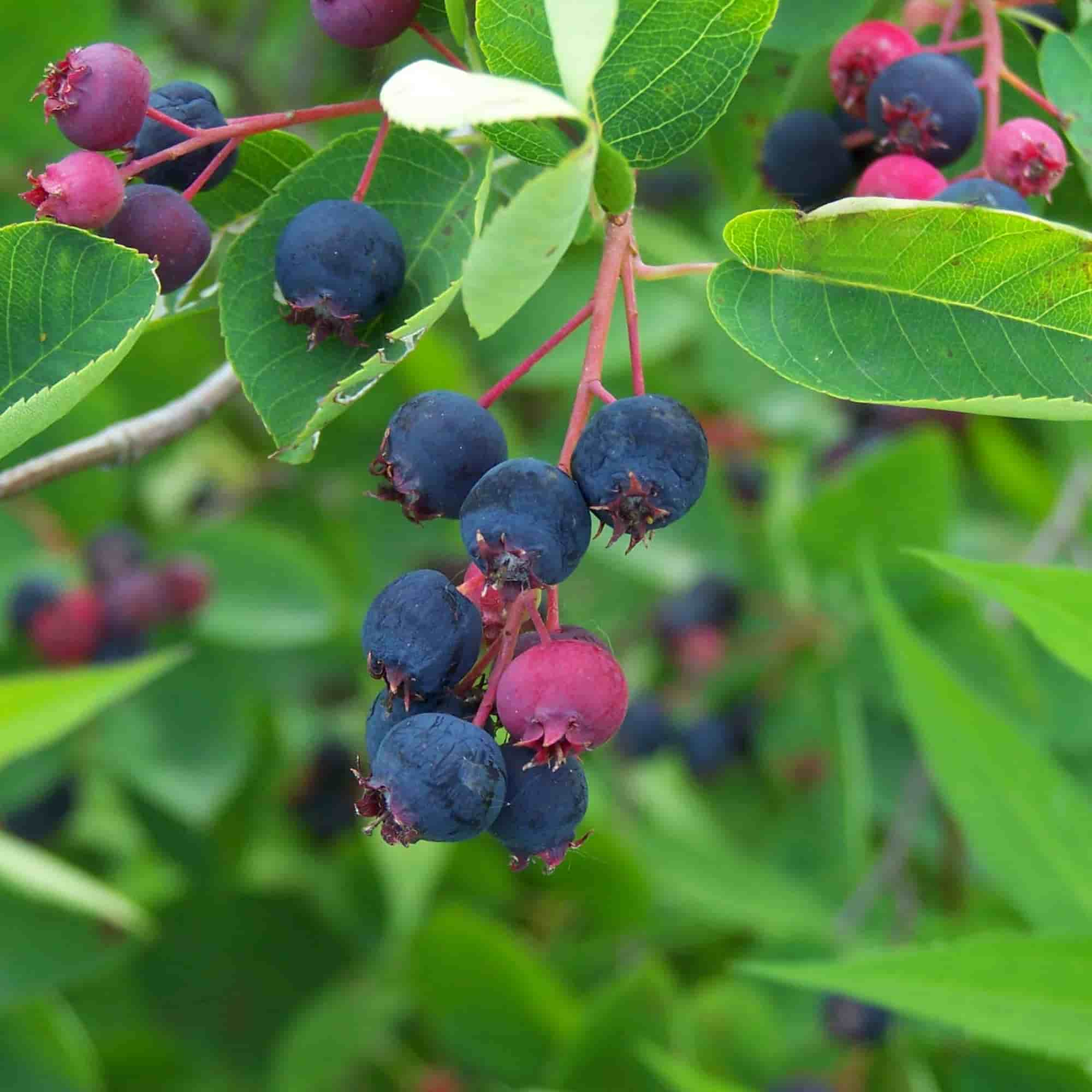
How to harvest and store serviceberry fruits?
All our tips to make the most of serviceberries, the delicious sweet berries of the service tree
Contents
One often chooses to plant a serviceberry in their garden for its magnificent white flowering that heralds spring. It is indeed one of the first bushes to bloom as early as April or May, depending on the region. But we also love the serviceberry for its vibrant autumn colours, with foliage turning shades of red, copper, and purple… However, what is less known is that the serviceberry also produces small edible berries in the heart of summer, ranging from pink to dark purple. Highly appreciated in Canada, these serviceberries can be cooked or dried. We will explain when and how to harvest serviceberry berries, and especially what to do with them.
What are these small berries called serviceberries?
Before discussing serviceberry from a culinary perspective, let’s take a brief detour into etymology: the French word “amélanche” comes from the Occitan “amalenca,” which refers to the only European species, native to Provence, the Amelanchier ovalis, that grows from scrubland to high mountains. Other species such as the Amelanchier canadensis and the Amelanchier lamarckii, native to North America, thrive easily in France due to their hardiness down to -25 °C. The amelanchier boasts an abundant white spring flowering
The amelanchier boasts an abundant white spring flowering
All serviceberries are notable for their abundant white spring flowering, their autumn foliage of a fiery red, and their edible fruits, which are not well known enough. These are round berries that, when ripe, display a colour ranging from violet to dark black. Their colour resembles that of blueberries, as does their shape and size, which hardly exceeds 1 cm in diameter. During their ripening phase, amélanches transition from pink to dark purple before becoming almost black. Known as “little pears” in Quebec, amélanches are fleshy and develop varied flavours of apples, cherries, blueberries, pears… and small bitter almond pips. Very juicy and sweet, they have a slight hint of acidity. In Canada, amélanches are indeed cultivated for fruit production.
Nutritionally, the serviceberry is interesting for its content of manganese, magnesium, and iron, as well as calcium, potassium, beta-carotene, and vitamins. It is also a fruit rich in antioxidants and fibre. Additionally, it contains pectin, making it an ideal candidate for jam.
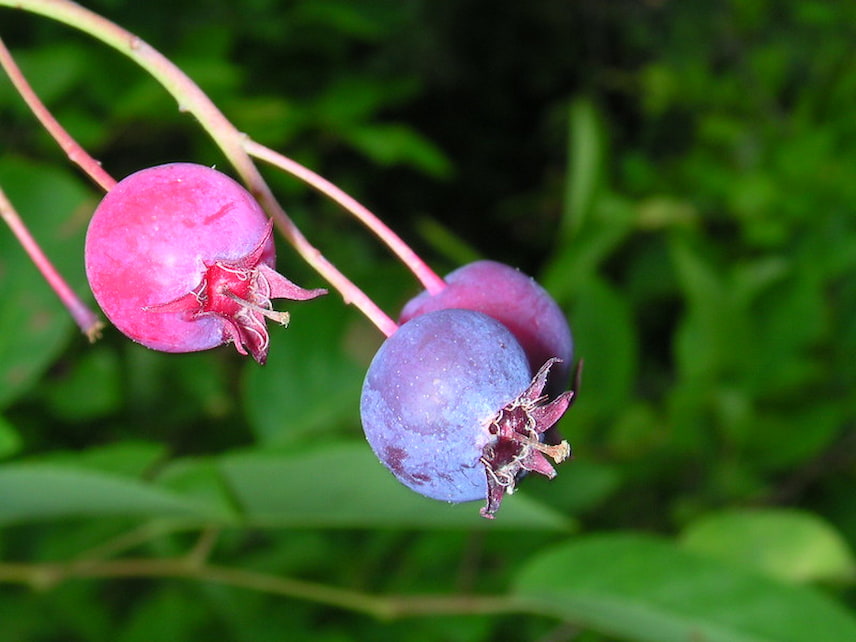 During its ripening, the amélanche goes through several colours
During its ripening, the amélanche goes through several colours
Read also
Amelanchier: planting, pruning, growingWhen and how to harvest serviceberry fruits?
Amelanchiers are harvested in the heart of summer, between July and August. The harvest lasts for about twenty days. This harvest can be brought forward to June and delayed until September, depending on the species, soil, and climate. It is relatively easy since the serviceberry rarely exceeds 3 to 4 metres in height and forms a coppice.
The harvest is done gradually as the berries ripen, changing colour. Starting pink, then red, they become purple to dark violet, even black when fully ripe.
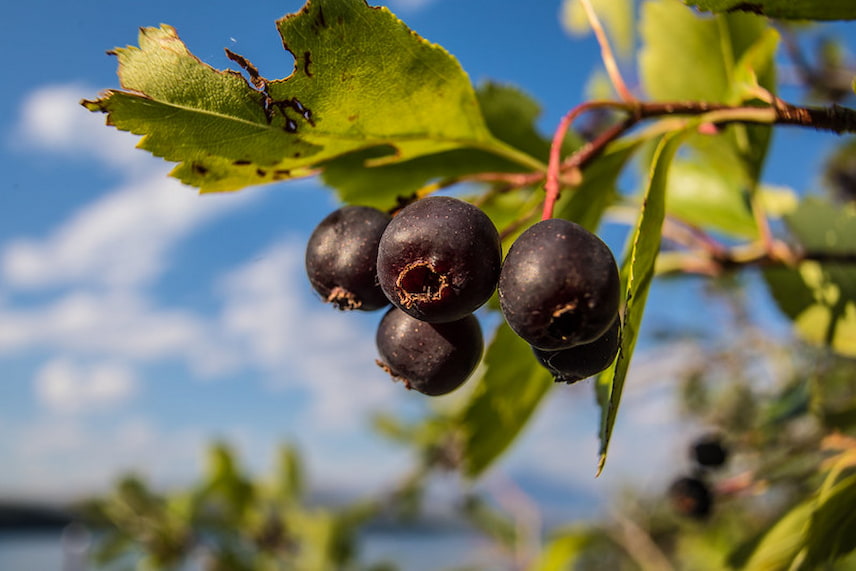 Once ripe, amelanchier berries are almost black
Once ripe, amelanchier berries are almost black
To harvest them, simply pull gently: they come off easily! A comb can also be used, similar to harvesting wild blueberries. However, you will need to compete with the birds that love these fruits (especially blackbirds) or set up a net.
Discover other Saskatoon - Juneberry
View all →Available in 5 sizes
Available in 2 sizes
Available in 1 sizes
Available in 2 sizes
Available in 1 sizes
Available in 1 sizes
Available in 1 sizes
Available in 1 sizes
Available in 1 sizes
Available in 1 sizes
How to make the most of serviceberries?
If you resist the temptation to eat them straight from the tree, you can use serviceberries in a multitude of desserts, just as you would when cooking with blueberries. Serviceberries are delicious when incorporated into pastries such as muffins, scones, financiers, clafoutis, tarts, and cheesecakes… They can also be added to a cream or a smoothie.

Serviceberries are delicious when integrated into pastries
You can also prepare them as compotes or syrups, in jellies, coulis, or jams. You can make a wine or a liqueur, or flavour a vinegar with them.
In Quebec, serviceberry spreads are easily found and can be enjoyed on their own or as a sauce base.
In Canada, serviceberries are used in a sauce that accompanies roast beef. Some even incorporate them into “pemmican,” a dish made from dried bison meat, ground into powder and mixed with lard.
Read also
How to prune Amelanchier?How to preserve these small, sweet, and juicy berries?
Serviceberries can be stored for 2 to 3 days at 5 °C in the refrigerator if you wish to consume them fresh.
It is also very easy to freeze them to later transform them into jams, jellies, syrups, or wines:
- Wash them thoroughly in cold water by immersing them in a large basin of water. Impurities and insects will rise to the surface, while the serviceberries will remain at the bottom.
- Dry them with absorbent paper or a clean cloth.
- Arrange the serviceberries in a single layer on a short stem of bulb or a tray lined with baking paper.
- Place in the freezer.
- Once frozen, transfer the serviceberries to a freezer bag. They can be stored for about a year.
You can also dry serviceberries. This is how Native Americans in America preserved them. There are three methods to dry them:
- Sun drying on wooden trays or a mesh support. Remember to cover the serviceberries with a light cloth to prevent insects from feasting on them. Bring your trays indoors at night to avoid moisture.
- Oven drying. Simply place the serviceberries on a baking tray set to 50 °C, leaving the door ajar. Let them dry for at least 3 hours, checking regularly.
- Dehydrator drying, which emits gentle heat. Refer to your device for the drying duration, as it may vary from one dehydrator to another.
Once dried, serviceberries can be stored for several months in an airtight jar away from light.
My recipe for serviceberry jam
For 1 kg of serviceberries, use 400 g of sugar.
- After washing the berries, crush them with a potato masher along with a bit of water in a jam pan.
- Gently bring to the boil while continuing to crush to separate the juice from the pulp.
- Pass this purée through a food mill.
- Mix with the sugar and 100 ml of water.
- Let it rest for one to two hours.
- Cook for at least 10 minutes. Check the consistency with the drop test on a plate. If the jam sets, it is done.
- Jar while the jam is hot.
- Subscribe!
- Contents
































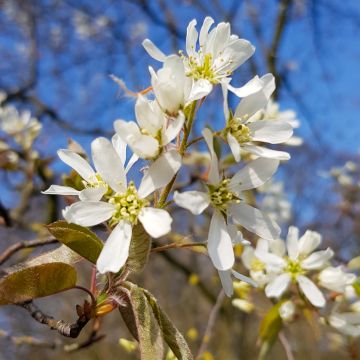



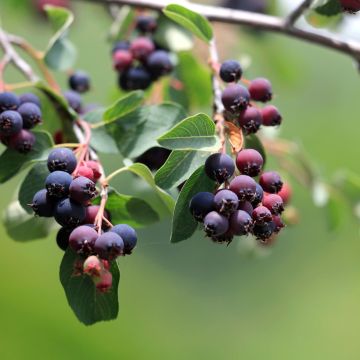

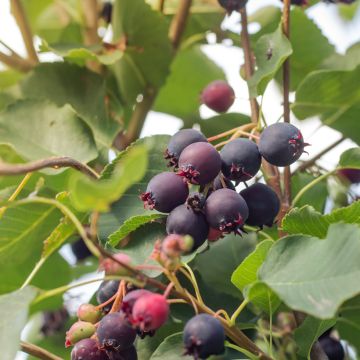
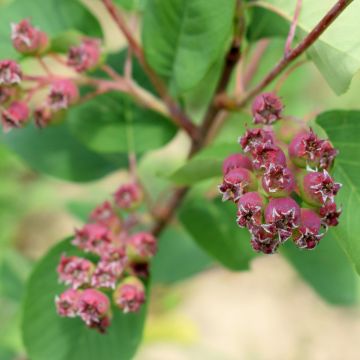
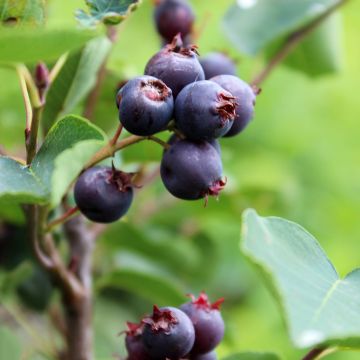

Comments